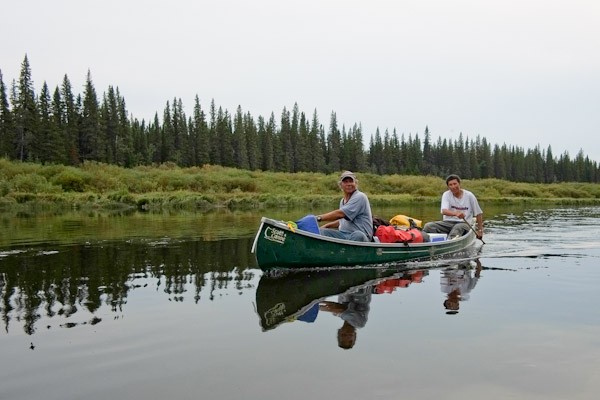KI Nation Paddles 300 miles to Protect their Wild Watershed
KI Nation Paddles 300 miles to Protect their Wild Watershed

A team of paddlers from the Kitchenuhmaykoosib Inninuwug (KI) Indigenous Nation have canoed along their ancient trading river route from their remote fly-in community to Hudson's Bay to protect their watershed from unwanted mining. The trip began on Aug. 24 and concluded on Sept. 8.
The KI Nation is calling on Ontario to respect their deep connection to the wild Fawn River watershed–a foundation of their culture, and the threatened heart of the world's largest intact forest.
Richard Anderson, KI’s watershed community worker, said the trip is about more than just following a trading route that his ancestors used to travel every year.
“The trip is for awareness that we are protecting our watersheds for future generations,” Anderson said. “The Elders have taught us that our water is very important for us up here, and we should keep it that way.”
Anderson has done the journey from KI to Fort Severn 11 times, and he still marvels at the efforts of his ancestors who used to do the trip there and back laden with supplies.
Through resistance, KI and their supporters have stopped mining companies Platinex and God's Lake Resources from exploring on their land. The community has also successfully pressured the Ontario government to withdraw approximately half of their watershed from all mining activity.
But the fight isn’t over yet. Ontario has yet to recognize KI's right to protect their entire watershed of 13,025 square kilometers and to control their homeland. The rest of the community’s watershed remains open to speculation by gold, diamond, and metals miners seeking to capitalize on Ontario’s mining boom.
The boreal forest and wetlands of KI homeland are part of the world’s largest carbon storehouse on land – a critical buffer against runaway climate change. The boreal is also the world’s greatest reservoir of fresh water and is among the largest unlogged forests left on the planet.
Some of the greatest wild rivers in the world flow through territories of Indigenous nations in Ontario’s far north, each running free for many hundreds of kilometers without any dams or diversions. Their clean source waters are filtered by the mossy forest and wetlands of extensive pristine watersheds. This is a land we must protect.
Concerned readers are urged to contact their legislative assembly members and demand that the Ontario government respects KI’s right to govern their territory and protect their land and water from unwanted mining.
This article first appeared in Vol. 5, No. 1 of the Leveller

